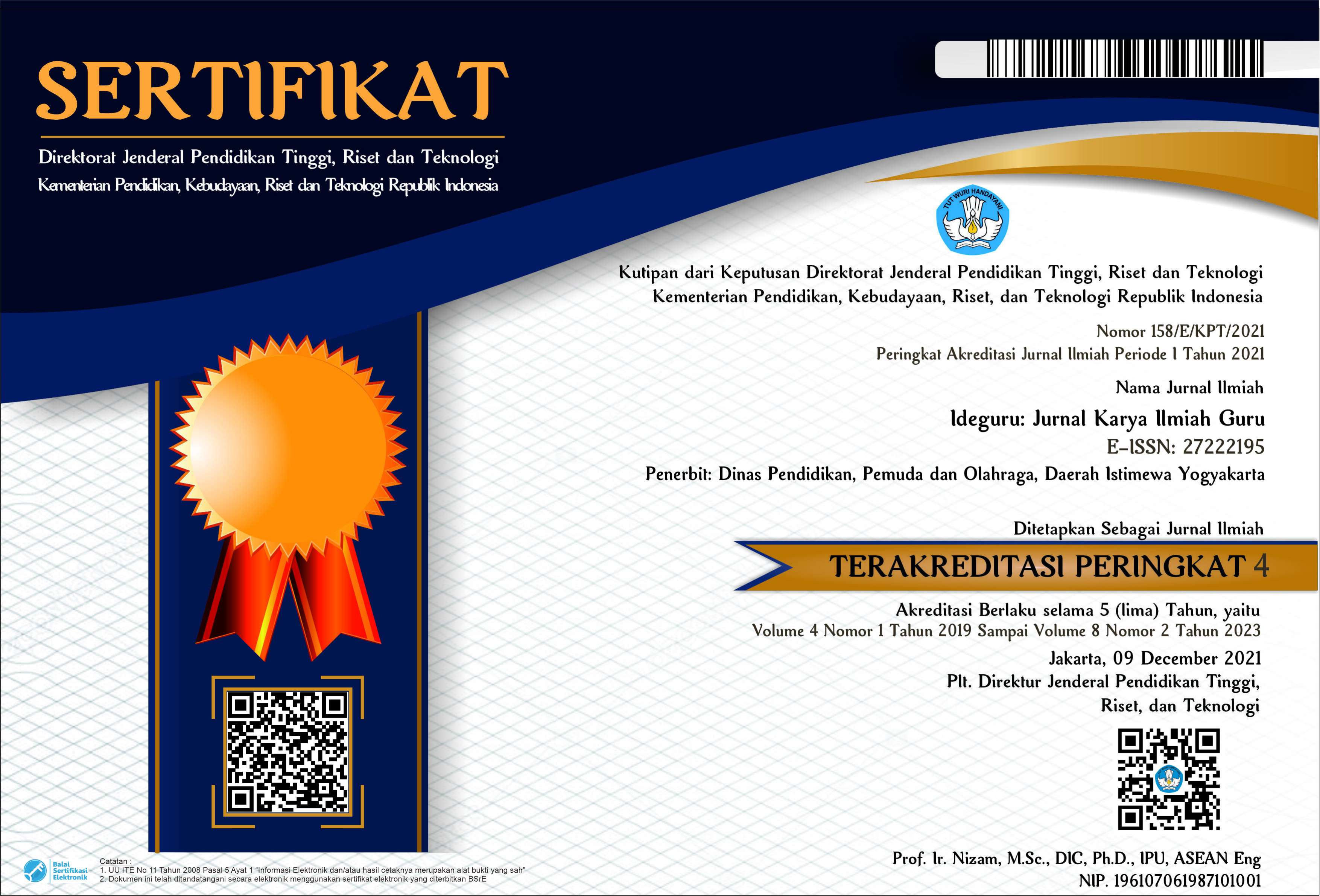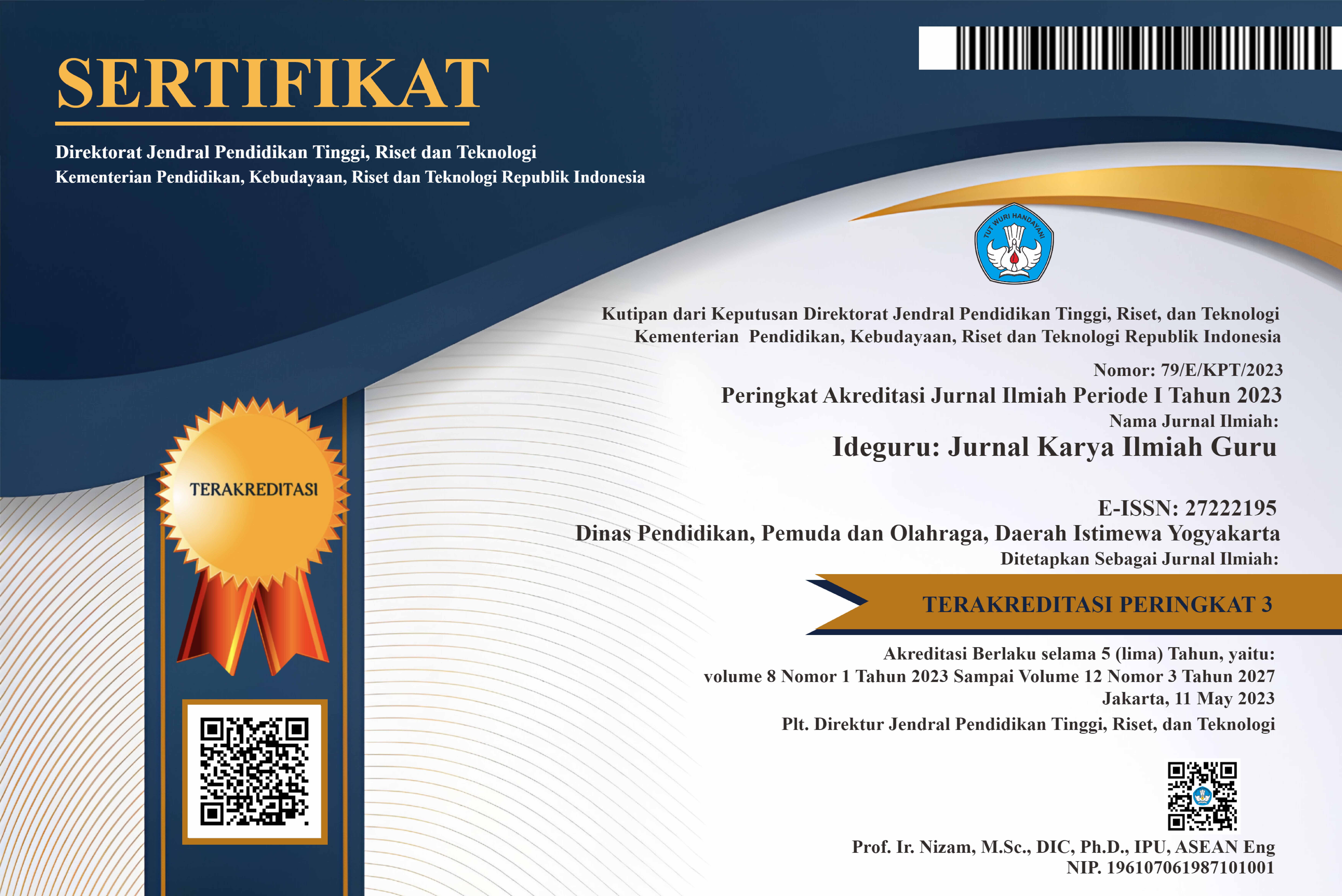Pengembangan Model Monitoring Berkala Praktik Kerja Lapangan pada Kurikulum Merdeka di Sekolah Menengah Kejuruan Negeri 1 Bantul
Abstract
The research aims to; (1) analyze the current monitoring model of field work practice (PKL) at SMKN 1 Bantul; (2) develop a periodic monitoring model of PKL in accordance with the principles of an independent curriculum; and (3) analyze the effectiveness of the developed periodic monitoring model in the concentration of expertise in Computer and Network Engineering at SMKN 1 Bantul. The research method uses research and development with the analyze, design, develop, implement, and evaluate model. The research sample was 70 students divided into an experimental class of 35 students from class XII TKJ 1 and a control class of 35 students from class XII TKJ 2. The data collection instrument used a questionnaire. Quantitative analysis using independent sample t-test and effectiveness test using N-Gain test. The results showed; (1) the PKL periodic monitoring model currently used in the TKJ expertise concentration at SMKN 1 Bantul in assessing students' technical and non-technical skills is carried out by regular monitoring through daily journals, monitoring students to receive real-time feedback, improve competence, and work readiness. In addition, industry involvement in monitoring helps align students' skills with the needs of the world of work; (2) the development of a periodic monitoring model at SMK N 1 Bantul is compiled in the form of a guidebook to facilitate teachers in implementing the model. The guidebook is structured, systematic, and attractive so that it is easy to understand and apply. The develop design stage produced a valid and feasible PKL periodic monitoring model. Periodic monitoring of PKL is optimized through the use of a digital-based monitoring website; and (3) the website-based PKL periodic monitoring model for the TKJ concentration at SMKN 1 Bantul is effective. This model allows assessment, filling in student daily journals, and real-time monitoring, making it more efficient. With high accessibility, this model facilitates communication between schools and industries, supports the digitalization of vocational education, and improves the quality of learning and student work readiness.
PDF Downloads
Copyright (c) 2025 Dariyati Dariyati, Budi Santosa, Tri Kuat

This work is licensed under a Creative Commons Attribution 4.0 International License.

 DOI:
DOI:













